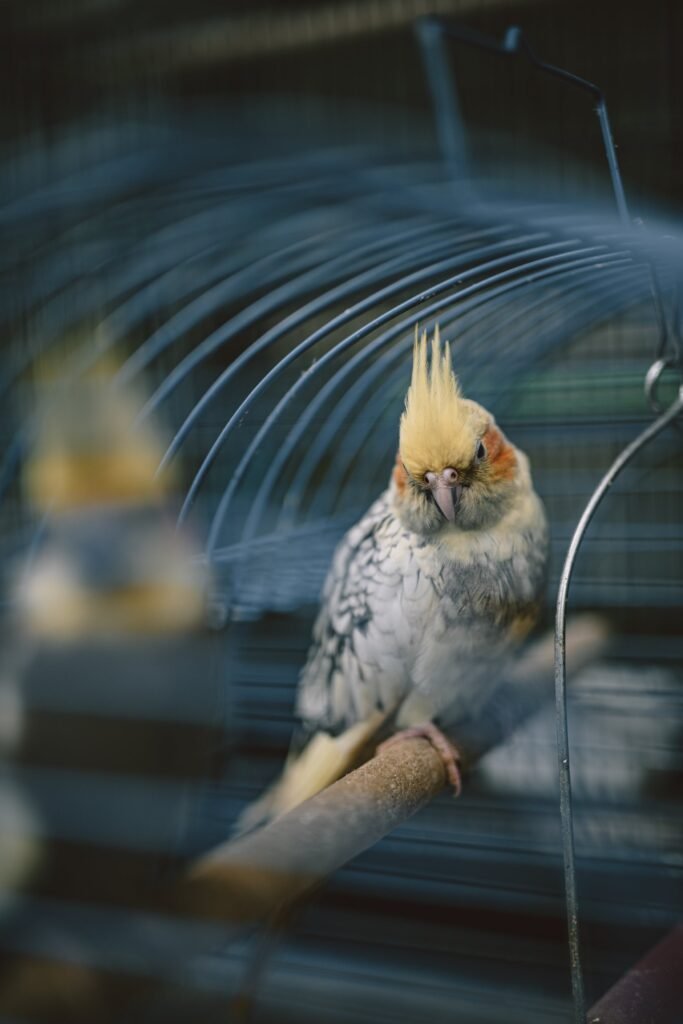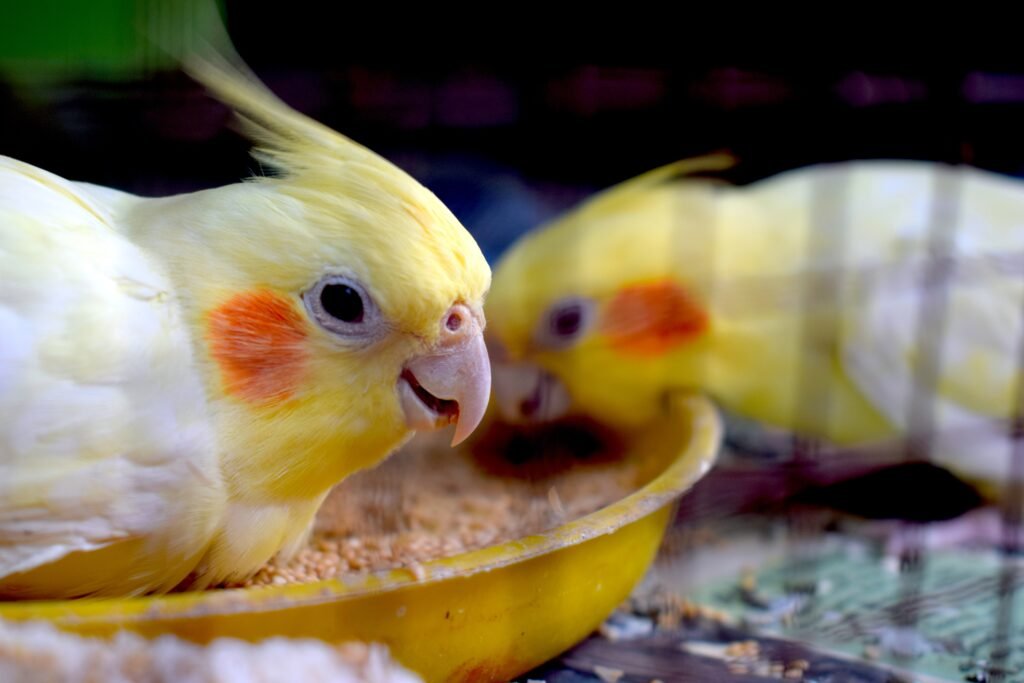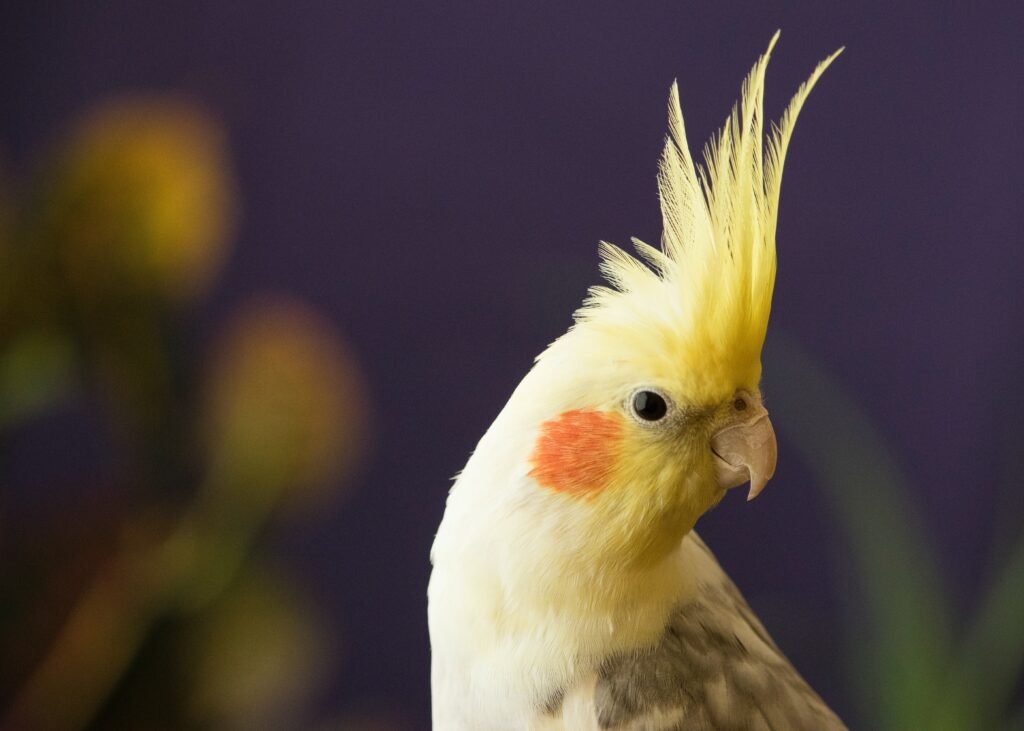
Cockatiels are highly popular pet birds known for their friendly and affectionate nature. As a bird owner, it is crucial to have a deep understanding of their behavior to provide them with the best care and create a harmonious bond. In this comprehensive guide, we will explore various aspects of cockatiel behavior, from their body language to vocalizations and social interactions.
Body Language of Cockatiels
Understanding cockatiel body language is crucial for interpreting their mood and needs. By observing their body language, you can effectively communicate with your feathered friend. Here are some key behaviors and what they might indicate:
Head Crest Position
Cockatiels have a unique crest atop their heads, which they can raise or lower. When the crest is raised and pointing forward, it usually signifies alertness, curiosity, or excitement. This is an indication that your cockatiel is engaged and interested in its surroundings. On the other hand, if the crest is flat against the head, it may indicate fear, aggression, or submission. In such cases, it is important to approach the bird with caution and create a calm environment.
Feather Puffing
Feather puffing is a behavior commonly seen in cockatiels. They fluff up their feathers to regulate body temperature, show contentment, or express relaxation. When a cockatiel puffs up its feathers, it usually means that it is comfortable and at ease in its environment. However, if the bird is constantly puffing up its feathers or appears fluffed up for extended periods, it may be a sign of illness or discomfort. It is important to monitor their behavior and seek veterinary attention if necessary.

Wing Fluttering
Wing fluttering is a sign of excitement and happiness in cockatiels. They may flutter their wings when they are excited to see their owners, during playtime, or when they are trying to attract a mate. This behavior is a form of communication and can also be seen during courtship displays. It is important to provide ample opportunities for your cockatiel to engage in wing fluttering, as it is an expression of their natural instincts and well-being.
Beak Grinding
Cockatiels often grind their beaks as a sign of contentment and relaxation. It is similar to how cats purr when they are happy or calm. Beak grinding is a self-soothing behavior that cockatiels engage in to release tension and promote relaxation. It is a positive sign that your bird is comfortable and feeling secure in its environment. Providing a peaceful and stress-free atmosphere for your cockatiel can encourage this behavior.
Vocalizations of Cockatiels
Cockatiels are known for their lovely vocal abilities and diverse range of sounds. Understanding their vocalizations can help you communicate with your feathered friend effectively. Here are some common cockatiel sounds and their meanings:
Whistling and Singing
Cockatiels are natural whistlers and singers. They love to mimic sounds and learn new tunes. Whistling and singing are signs of happiness and contentment. When your cockatiel starts whistling or singing along with you, it is a positive indication that they feel safe and comfortable in your presence. Encouraging your cockatiel to sing along with you can strengthen your bond and provide mental stimulation for the bird.
Chirping and Chattering
Chirping and chattering are natural vocalizations for cockatiels. They use these sounds to communicate with their flock or express their presence. Cockatiels may chirp when they are in a new environment, feeling lonely, or seeking attention. It is important to pay attention to the context in which the chirping occurs. For example, if your cockatiel chirps when you leave the room, it may be a sign of separation anxiety. Providing appropriate social interaction and mental stimulation can help alleviate this behavior.
Screeching and Squawking
Screeching and squawking are usually louder and more intense vocalizations that cockatiels use to alert or warn their flock members. They may screech when they feel threatened, scared, or agitated. Identifying the cause of their distress is essential to address the issue and provide a calm environment. It is important to create a safe and secure space for your cockatiel, as excessive screeching can be a sign of underlying stress or discomfort. Providing hiding spots, toys, and a consistent routine can help reduce screeching behavior.
Social Behavior and Interaction
Cockatiels are highly social birds that thrive on companionship and interaction. Understanding their social behavior is crucial to their well-being. Here are some essential aspects of their social dynamics:
Flock Mentality
Cockatiels have a natural inclination towards flock mentality. They value being part of a group and enjoy spending time with their human or avian companions. Providing ample social interaction and avoiding isolation is crucial for their mental health. Cockatiels may become stressed or develop behavioral issues if they are kept in isolation for long periods. It is recommended to spend quality time with your cockatiel, engaging in activities such as talking, whistling, and training to strengthen the bond and promote their overall well-being.
Bonding with Owners
Cockatiels have the capacity to form deep bonds with their owners. Spending quality time with them, talking, whistling, and providing positive reinforcement can help strengthen the bond. However, it is essential to note that each bird has its own unique personality and may require different levels of interaction. Some cockatiels may be more independent and prefer occasional interaction, while others may crave constant attention. Understanding your cockatiel’s individual needs and preferences is key to establishing a strong and healthy bond.
Territory and Aggression
Like many animals, cockatiels have their own territories that they defend. It is common for them to display territorial aggression, especially during mating season or when they feel threatened. Understanding their territorial behavior can help you create a safe and harmonious environment for them. Providing multiple perches, toys, and hiding spots can help alleviate territorial aggression by providing outlets for their natural instincts. It is important to establish boundaries and consistent rules to prevent aggressive behavior towards humans or other pets in the household.
Common Behavioral Issues and Solutions
While cockatiels are generally friendly and well-behaved pets, they may exhibit certain behavioral issues. Here are a few common problems and their potential solutions:
Biting
Cockatiels may bite when they feel scared, threatened, or overwhelmed. Providing them with proper socialization, a calm environment, and positive reinforcement can help reduce biting behavior. It is important never to punish or yell at your bird as it can lead to further fear and aggression. Instead, focus on building trust and gradually introducing new experiences to help your cockatiel feel more comfortable and secure.
Feather Plucking
Feather plucking is a behavior where cockatiels excessively chew or pull out their feathers. This behavior can be caused by various factors, including boredom, stress, or health issues. Identifying the root cause and addressing it, along with providing mental and physical stimulation, is crucial in resolving feather plucking. Ensuring a balanced and enriching environment, offering a variety of toys and activities, and providing a healthy diet can help prevent or reduce feather plucking behavior.
Screaming
Cockatiels may engage in excessive screaming, which can be taxing for both the bird and its owner. Screaming can be a sign of boredom, attention-seeking, or mimicry of environmental sounds. Ensuring that your cockatiel receives enough mental and physical stimulation, along with a consistent routine, can help reduce excessive screaming. Providing toys, interactive activities, and engaging in regular training sessions can help redirect their energy and prevent boredom-related screaming.
In conclusion, understanding cockatiel behavior is essential for providing them with the best care and building a strong bond. By observing their body language, interpreting vocalizations, and addressing any behavioral issues, you can ensure a happy and fulfilling life for your beloved feathered companion. Remember to consult with avian experts or veterinarians for specific concerns or questions regarding your cockatiel’s behavior.



